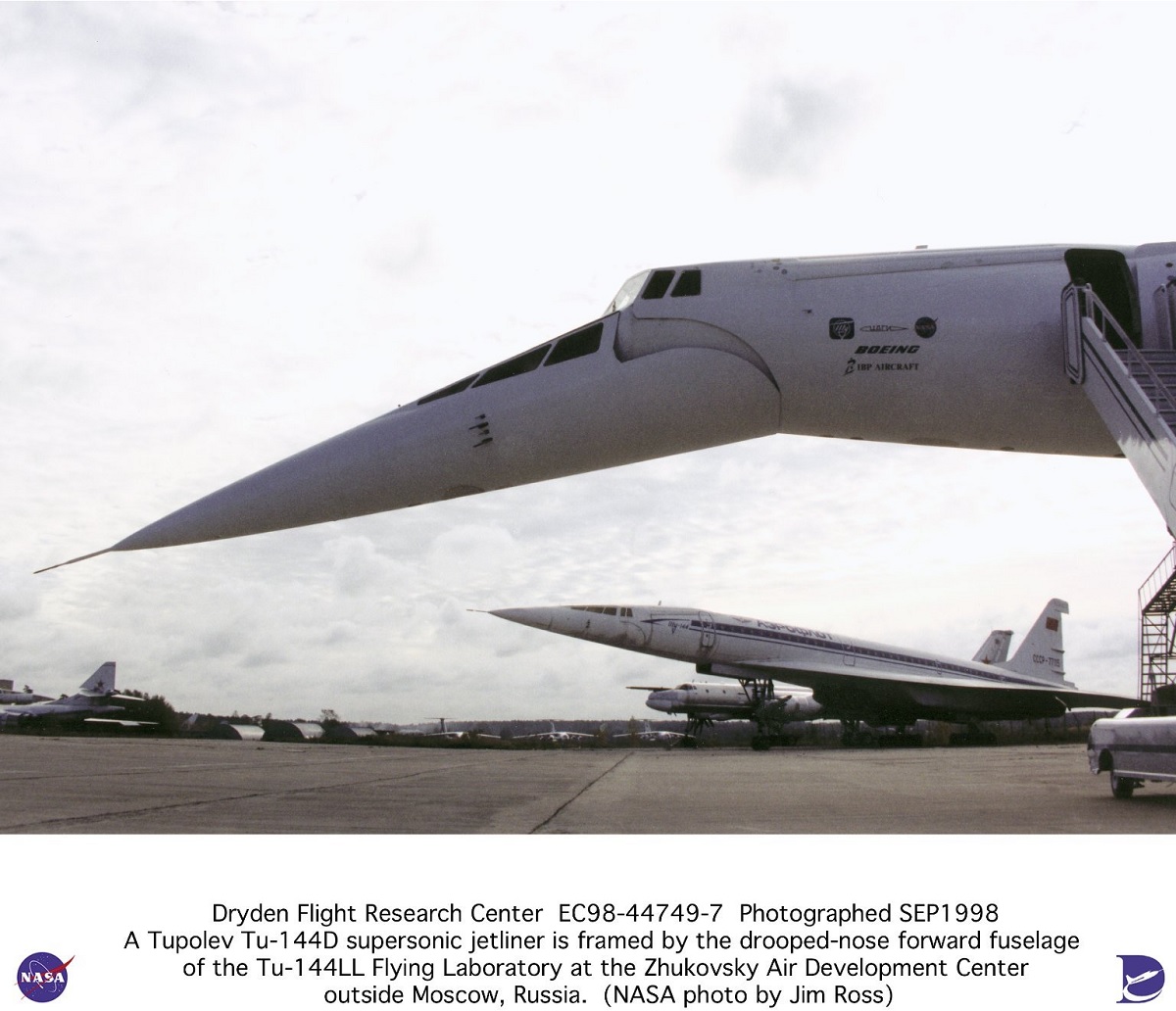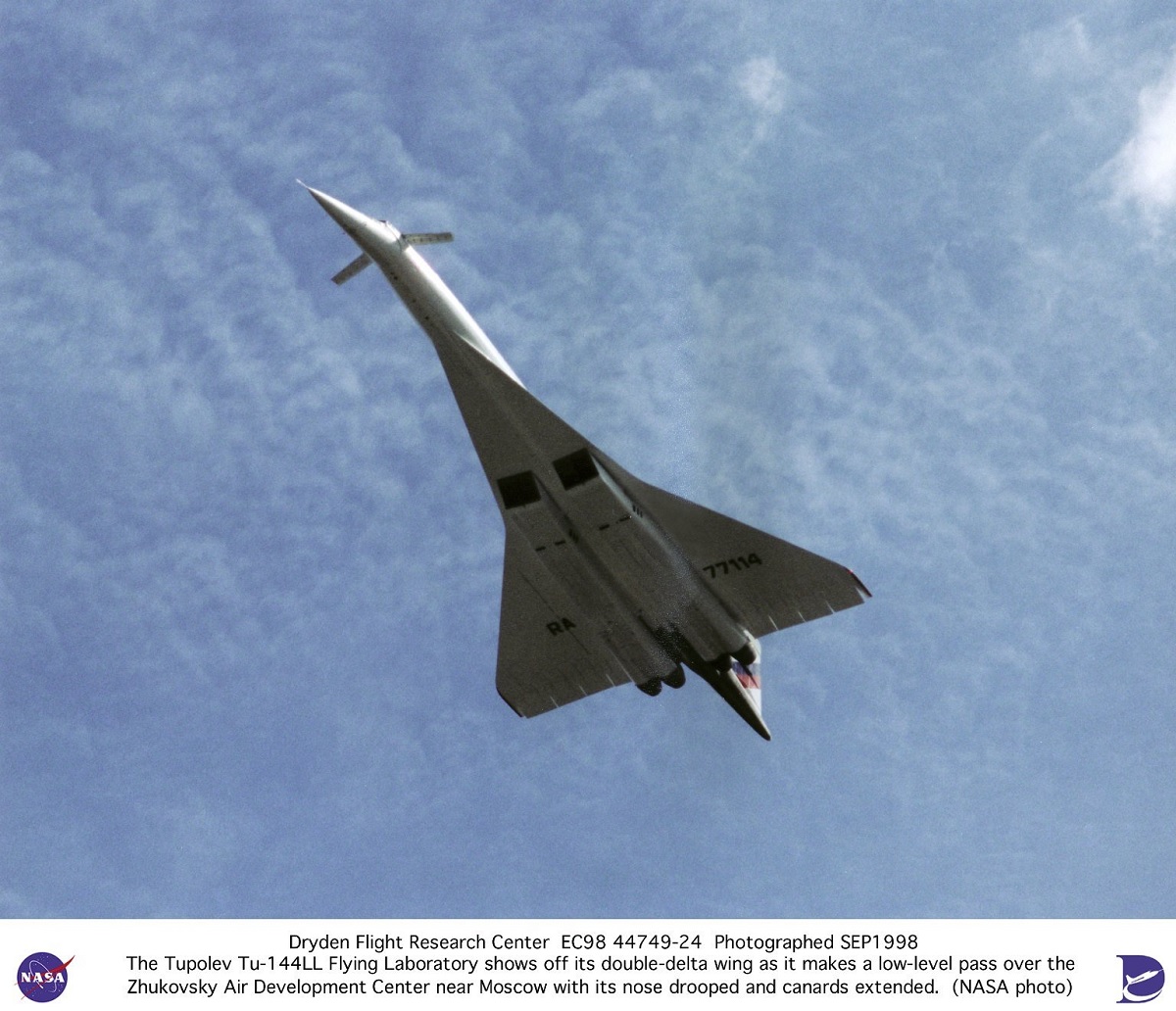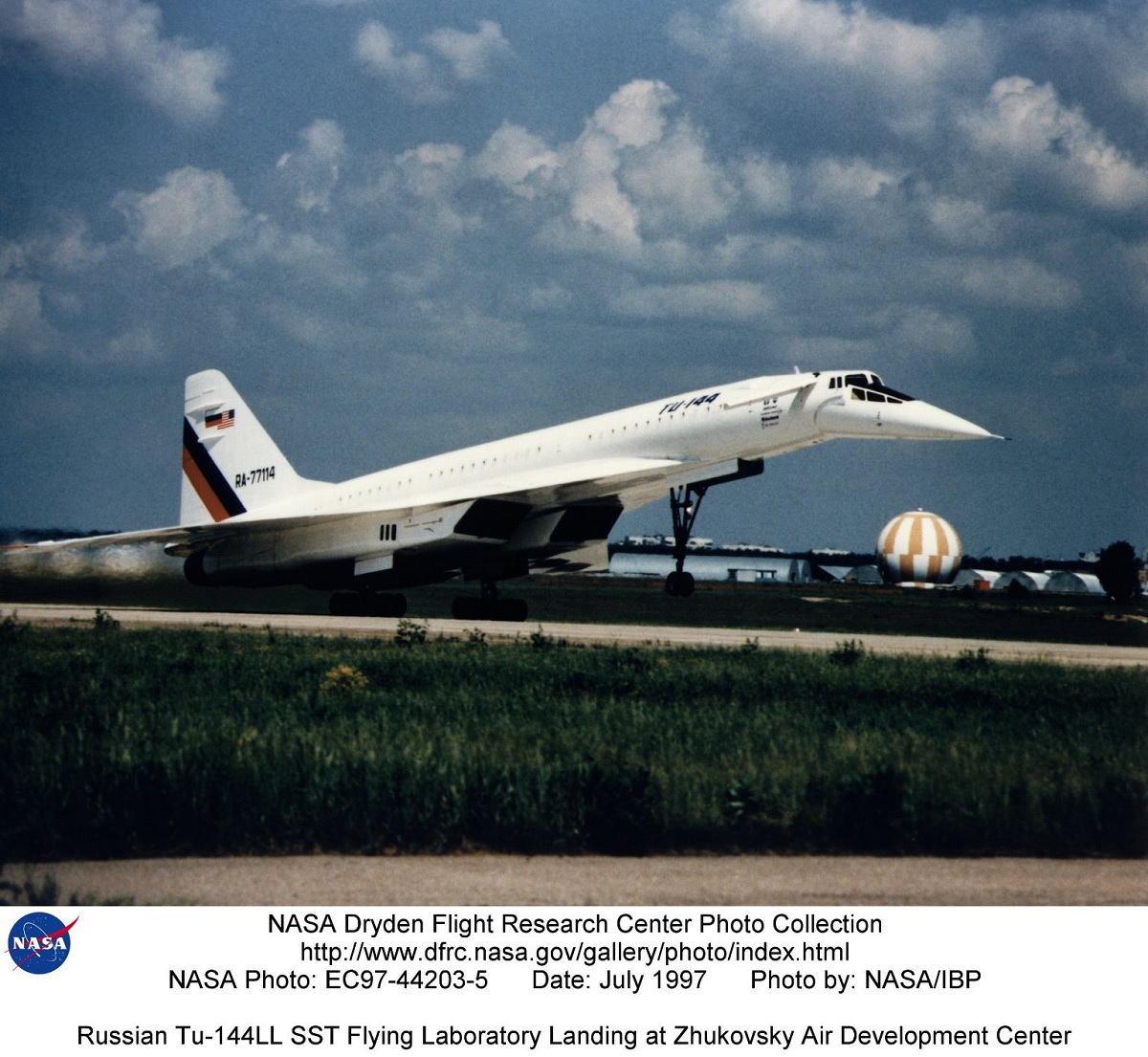Researchers contrasted full-scale supersonic aircraft flight data with findings from models in wind tunnels, computer-aided procedures, and other flight tests using the Tu-144LL to conduct flight tests
For a lengthy period, NASA collaborated with the American and Russian aerospace industries on an international research project that employed the Russian-built Tu-144LL supersonic aircraft. The program’s goal was to develop technologies for a second-generation supersonic airliner that was envisioned for the twenty-first century. After 19 research flights, the aircraft’s initial flight phase ended in February 1998. It started in June 1996. A more condensed continuation program with seven flights started in September 1998 and ended in April 1999.

From Tupolev’s location at the Zhukovsky Air Development Center outside of Moscow, all flights were made within the Russian Federation. The centerpiece of the research program was the Tu 144LL, a first-generation Russian supersonic jetliner that was modified by its developer/builder, Tupolev ANTK (aviatsionnyy nauchno-tekhnicheskiy kompleks-roughly, aviation technical complex), into a flying laboratory for supersonic research.
Researchers contrasted real-world supersonic aircraft flight data with findings from computer-aided simulations, wind tunnel models, and other flight tests while conducting flight research experiments with the Tu-144LL. Unique information about supersonic passenger aircraft’s aerodynamics, construction, acoustics, and operational conditions was contributed by the experiments. The technology foundation for a future supersonic airliner that would be produced in the United States was being developed using data gathered from the research effort. A market for up to 500 of these aircraft may emerge by the third decade of the twenty-first century, according to commercial aviation specialists, despite the fact that the actual development of such an advanced supersonic transport (SST) is now on hold.

The Tu-144LL employed in the research program funded by NASA was a “D” model with different engines than those found in planes in production. Eight investigations, comprising six flying tests and two ground (engine) tests, were chosen from the fifty that were submitted for the program.
The aircraft’s exterior surface, internal structure, engine temperatures, boundary-layer airflow, the wing’s ground-effect characteristics, interior, and exterior noise, handling characteristics in different flight profiles, and in-flight structural flexibility were all studied during the flight experiments. The ground testing looked at how air inlet architecture affected airflow into the engine and how supersonic shock waves changed location in the engine air inlet quickly.

With additional hardware attached to aid in data collection and analysis, the first six in-flight experiments were analyzed in greater detail during the testing phase’s second iteration. A fresh experiment was also carried out to gauge the wing and fuselage’s in-flight deflections. American-made transducers and sensors were inserted to more precisely measure the pressures in the nose boom, the angle of attack, and the sideslip angles.
During three flight tests in September 1998, two NASA pilots—Robert Rivers of Langley Research Center in Hampton, Virginia, and Gordon Fullerton of Dryden Flight Research Center in Edwards, California—assessed the aircraft’s handling at subsonic and supersonic speeds. After four additional data-collection flights in the spring of 1999, the program came to an end.

The new Kuznetsov NK-321 turbofan engines that powered the Tu-144LL variant had a full afterburner thrust rating of almost 55,000 pounds. The plane had a wingspan of 94 feet, 6 inches, and measured 215 feet, 6 inches long and 42 feet, 2 inches high. The majority of the aircraft’s structure was made of a light aluminum alloy, with titanium and stainless steel used for the rudder, elevons, and underside of the rear fuselage.
Source: dvids
Photo by NASA

